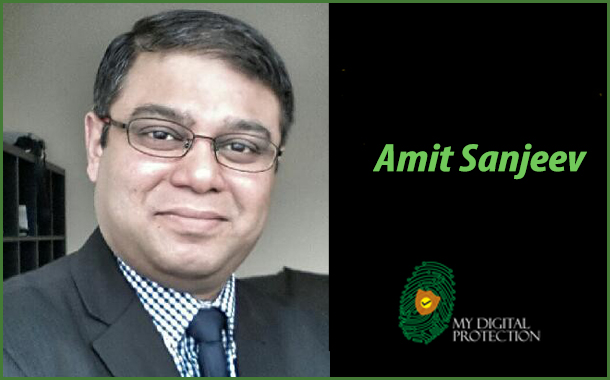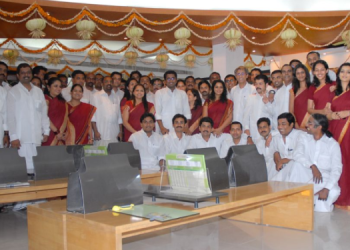Authored by Amit Sanjeev – Director, My Digital Protection
It is now beyond a fact that we lead dual lives – one physical and one digital – more and more digital as we take massive strides in technology every day. With the advent of voice controlled devices and bots that promise to enrich our lives with relevant and time sensitive information, we are now constantly at battles between convenience and security in our daily lives. The closest analogy to this dilemma, is the feeling of frustration and at the same time the sense of assurance while queuing up for security checks at airports. We need the convenience of moving faster while not compromising the safety procedures which assures us of a safe journey from point A to point B. This battle isn’t going to end any time soon and only promises to get fierce as we seek to make our lives more convenient.

Following the demonetisation process in Nov 2016, the internet has been abuzz with a lot of expert views, forecasts, speculations and comments of how residents in India were forced to adapt to the digital channels. While a lot of Indian consumers, especially in the age bracket of 20-45, made their transition to the digital channels, it also spurred a lot of activity in the start-up space, where new solutions/services were developed to help consumers make that transition. In a way, the process provided a great impetus to Digital India and expedited the process of including a lot more netizen segments into the digital stream than it would have normally taken. Who would have thought that a vegetable vendor or an auto rickshaw driver would be able to receive payments through digital channels in real time at the point of sale/service!
But that’s the good story – Convenience won! Convenience, today, that allows us to drive out into the internet highway to seek, feel, experience the world and information outside, but we seemed to have forgotten to lock our homes before took/are taking to this highway. Would you ever leave your house unlocked, before going out to do your daily chores or holiday? If no, then why wouldn’t you do the same, while taking to the internet? Why would you not be conscious of the digital footprint you leave behind every time you make that journey?
The one major thing that demonetisation exposed in 2017/2018 is the unpreparedness of Digital India in the security space. Consumers and corporate India – both equally – were caught out like a deer in the headlights. With no definitive guidance or formal policy on data privacy, corporates and consumers did not have a solid sounding board on how, what, where, when and for how long could a consumer’s personal data be captured and used without invading their personal space? Also, what responsibilities did corporate India have with regards to this sensitive consumer information, so that none of them became victims of fraud or identity theft?
The story there is not that grim. The impact of the exposure mentioned above, has in a way, forced the government to think seriously on a formal data privacy policy in India. The draft of India’s own data privacy policy was submitted recently and that in turn has triggered a flurry of activities within Corporate India. Especially financial institutions have taken aggressively to various technologies that provide them insights and foresights in to their security infrastructure. With concepts such as threat hunting taking centre stage, organisations are moving to secure their perimeters and becoming more stringent with their suppliers, with regards to consumers personal data.
However the end consumer is still the weakest link in this equation. Data privacy law seems to talk about a lot on organisation commitment (as it should) but is silent on individual commitment. The responsibility of protecting one’s data privacy is a joint one and the end consumer will need to be aware of this. Like the physical world, a consumer would need to know both – his/her rights and duties. While he/she needs to be educated on the how, what, where and how on personal data security, the consumer also has the duty of maintaining adequate level of data hygiene to minimise their exposure to identity theft. All this with a robust grievance structure that is backed by strict regulatory support.
While a large section of the population in the country, does not use an anti-virus or the right anti-virus, there is an ever rising threat of personal devices (including mobile phones and tabs) being infected with malware. Devices on which consumers share, transact, shop and communicate on a daily basis. More worryingly devices on which younger generation now lead their social lives and collaborate with their friends while playing games. These malwares can easily leak vital personal and financial data to hackers without being detected.
The terms identity theft and privacy of personal data are still fairly nascent in India and as more and more of us take to the web for our festive purchases, a few of us are truly safe. As we exploit the convenience offered by the web, it is also important to be mindful of where, how, why and for how long are we leaving a digital footprint on the internet highway.
In conclusion, data is the new gold and no doubt that a lot of people are now mining it. The digital era has opened up a pandora’s box of various concerns such as phishing, data theft, scams, vishing, Data eavesdropping, Cyber bullying, to name a few, with the overarching concern on the intrusion to the privacy of Individuals. While it is not possible to stop the growth and use of technology, it is important to strike the right balance between the convenience and data privacy protection.
The author of this article is the director of My Digital Protection (www.mydigitalprotection.com), which focuses on empowering consumers in terms of information and tools to make the digital world a safer place for them.
(This is an authored article and views expressed do not in any way represent the views of tvnews4u.com)

















